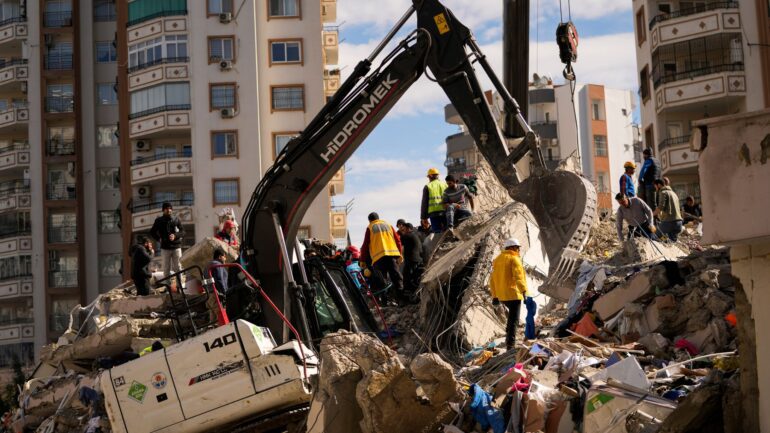TL;DR:
- Researchers at The University of Texas at Austin employ AI for earthquake forecasting.
- AI correctly predicted 70% of earthquakes a week in advance during a seven-month trial in China.
- The AI analyzes real-time seismic data and past earthquake patterns to make forecasts.
- While it missed one quake and issued eight false alarms, it’s a significant milestone in AI-driven earthquake forecasting.
- Future success is expected in regions with robust seismic networks.
- Plans to test AI in Texas, a high-risk earthquake area, for further validation.
- Long-term goal: Integrating AI with physics-based models for areas with limited data.
Main AI News:
In the realm of seismic predictions, a groundbreaking advancement is emerging as researchers at The University of Texas at Austin employ artificial intelligence (AI) to forecast earthquakes. This remarkable development holds the promise of mitigating the profound impact of earthquakes on both lives and economies. During a comprehensive seven-month trial conducted in China, an AI algorithm exhibited its prowess by accurately predicting 70% of impending earthquakes a week before their occurrence.
The AI system was meticulously trained to identify subtle statistical anomalies in real-time seismic data, juxtaposed with historical earthquake data. The outcome yielded a weekly forecast, with the AI remarkably forecasting 14 earthquakes occurring within approximately 200 miles of its estimated epicenters, nearly matching the calculated magnitude. While it did miss one earthquake and issued eight false alarms, the results underscore a significant milestone in the realm of AI-driven earthquake forecasting.
Sergey Fomel, a professor at UT’s Bureau of Economic Geology and a pivotal member of the research team, aptly described the endeavor as the “holy grail” of earthquake prediction. While we may not be on the precipice of making worldwide earthquake predictions, the achievement underscores the potential solution to what was once deemed an insurmountable challenge.
This seismic endeavor took center stage as part of an international competition in China, where the AI developed by UT outperformed 600 other designs. The UT entry was spearheaded by bureau seismologist and the AI’s lead developer, Yangkang Chen. The comprehensive findings from the trial have been meticulously documented in the Bulletin of the Seismological Society of America.
As Alexandros Savvaidis, a senior research scientist heading the bureau’s Texas Seismological Network Program (TexNet), astutely observed, earthquakes strike with the swiftness of milliseconds, offering minimal time for preparation. With a 70% success rate, this AI innovation has the potential to substantially reduce economic and human losses and revolutionize global earthquake preparedness.
The AI’s methodology was ingeniously rooted in a relatively straightforward machine learning approach. It was provided with a set of statistical features grounded in the team’s profound understanding of earthquake physics, after which it underwent self-training using a five-year database of seismic recordings. Once honed, the AI delivered its forecasts by discerning subtle signals amid the continuous murmurs of the Earth.
Scott Tinker, the bureau’s director, commended the team’s remarkable achievement, acknowledging that earthquake prediction remains an incredibly complex challenge, encompassing not only location and magnitude but also timing.
The researchers harbor optimism that in regions boasting robust seismic monitoring networks, such as California, Italy, Japan, Greece, Turkey, and Texas, the AI’s success rate will further elevate, and its predictions will hone in on locations within a few tens of miles.
The next crucial phase involves putting the AI to the test in Texas, a state prone to frequent minor- and moderate-magnitude earthquakes. The bureau’s TexNet infrastructure, comprising 300 seismic stations and over six years of continuous records, positions it ideally for method validation.
Conclusion:
The success of AI-driven earthquake forecasting, with a 70% accuracy rate during trials, holds immense promise for the market. It signifies a step closer to mitigating the devastating impact of earthquakes on lives and economies. As this technology matures and integrates with existing systems, it could become a valuable tool for earthquake preparedness, particularly in earthquake-prone regions with robust monitoring networks. This development paves the way for improved safety and economic resilience in the face of seismic events.

